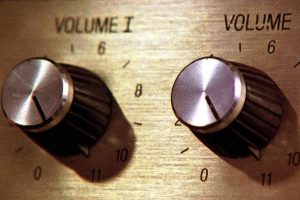As the second most-visited site on the internet, (and owned by the most-visited, Google), using YouTube to help build your brand is common sense. It has over 1.8 billion unique users every month (and those are just the ones who are logged in!). Furthermore, its relationship with Google is advantageous in itself: Google reserves a portion of their search result real estate for video content for certain kinds of keywords. How-to or tutorial videos, reviews, and videos with entertainment value speak to the trend that users prefer video to text in order to absorb information.
Its popularity makes it a near-universal platform for video hosting; you can share links, embed videos into blogs, social media platforms and websites (a great way of increasing views in itself), and, as a social network, build and interact with your target demographic. However, its popularity has a downside; it can be hard to stand out from the crowd.
So, with this in mind, we’ve compiled a few tips for taking full advantage of YouTube’s many benefits.
Content

Whether YouTube is your main platform, or you’re using it to promote your website or service, the most successful channels are those which have found their area of expertise and consistently done great things with it. It’s a bit of a cliche, but you need to find your niche. This is where keyword research comes in handy; by keeping an eye on search trends, popular but non-competitive keywords, and you can more easily establish the angle you need to create up-to-date and relevant content. Binging with Babish, for example, identified the popularity of cooking tutorials, and film and television-related content on YouTube, and combined them to create a niche but popular cooking channel.
It also goes without saying that the quality of your video will make a difference to the number of people who keep watching. Watch-time is perhaps the biggest factor in search-rankings, which is why longer videos do better. It can be difficult to produce engaging, varied and long videos in a short time frame. However, in a world where you can shoot 4k video on an smartphone and where high-resolution stock footage, sound effects, music and motion graphics are readily available, there’s no reason why your videos should look un-polished or repetitive.
While YouTube also provides free transcripts of the audio using speech-recognition, they can often be filled with errors. This doesn’t mean that it’s not worth devoting the time you save using stock footage or other resources to developing your own closed-captions and transcript. Not only does this make your content more accessible to the deaf and hard-of-hearing, but creator-generated transcripts are deemed more trustworthy by YouTube and help rank your video. Or you you can use Weet. Weet leverages AI to to automatically generate subtitles, and even translate them into over 30 languages. Then the user can download their Weet video with subtitles and just upload that file to YouTube.

So by making your script – as well as your title, description and tags – engaging and on-topic, you can easily take bridge the divide between the algorithm (which engages with text and user behaviour) and videos (which engage with the viewers themselves), and optimise your content for both. Lego, for example, take full advantage of this feature, by publishing their videos in multiple languages.
Its double-function as a video search engine and social media platform makes YouTube ideal for building up a following, as well as attracting web traffic. Asking your viewers directly to comment or reminding them to subscribe to your channel yields tangible results. Building up a dedicated community, whom you can encourage to subscribe, comment, and get feedback from tells YouTube that your video is worth promoting. This is more easily done if your videos are consistently relevant to the interests of the demographic you are hoping to reach.
Regularity: Keep it Coming

Unfortunately, good search-engine rankings aren’t achieved through a good content alone. Fresh content is given a short-term boost in YouTube search results, which can be critical for a video’s long-term shelf-life, so you should commit to a frequent and regular publishing schedule, and keep at it. This means optimizing your workflow: having ready-made content, such as intro and outro templates, stock footage, and sound effects can shave valuable time off your production schedule, ensuring that your channel stays up to date.
While the number of videos on a channel does little to increase the authority of the channel itself, it does directly affect the number of subscribers you gain. The more subscribers, the more authoritative the channel appears. Furthermore, the more videos you upload, the more you can take advantage of other features that ensure your video will be a success on YouTube, such as playlists of similarly themed videos.
Looper, for example, have playlists for every imaginable category, ranging from playlists concerned with a particular genre, to videos about individual films. The autoplay feature of a playlist ensures that users stay engaged with your channel by showing viewers more of the content they were searching for, increasing watch-time for individual videos and for your channel as a whole.
Monetizing Your Videos

Once you’ve built up your watch-time and the number of channel subscribers, you can do more tha simply increase traffic and user engagement; once you achieve 4000 hours of watch-time, and 1,000 subscribers within a twelve month timeframe, you are eligible to monetize your videos.
However, in order to do so, you will also be asked to make sure you have all the necessary commercial rights to the music and visual content in the video. Making sure you use stock videos and audio with royalty-free, creative commons, or equivalent licensing means you can take full advantage of monetization schemes. YouTube also advise that accurate titles and metadata are vital to making your videos advertiser-friendly.
With additional opportunities for user interaction and video monetization, as well as the advantages intrinsic to video and the platform itself, YouTube is a great tool to have in your brand marketing arsenal. Making the most of video as a medium – both on the site itself, and in conjunction with other platforms – means understanding how Youtube uses your content to ensure its own success as a platform.
Our small assortment of tips and tricks should help you on your way and – as always – do let us know if you think there’s anything we’ve missed!




